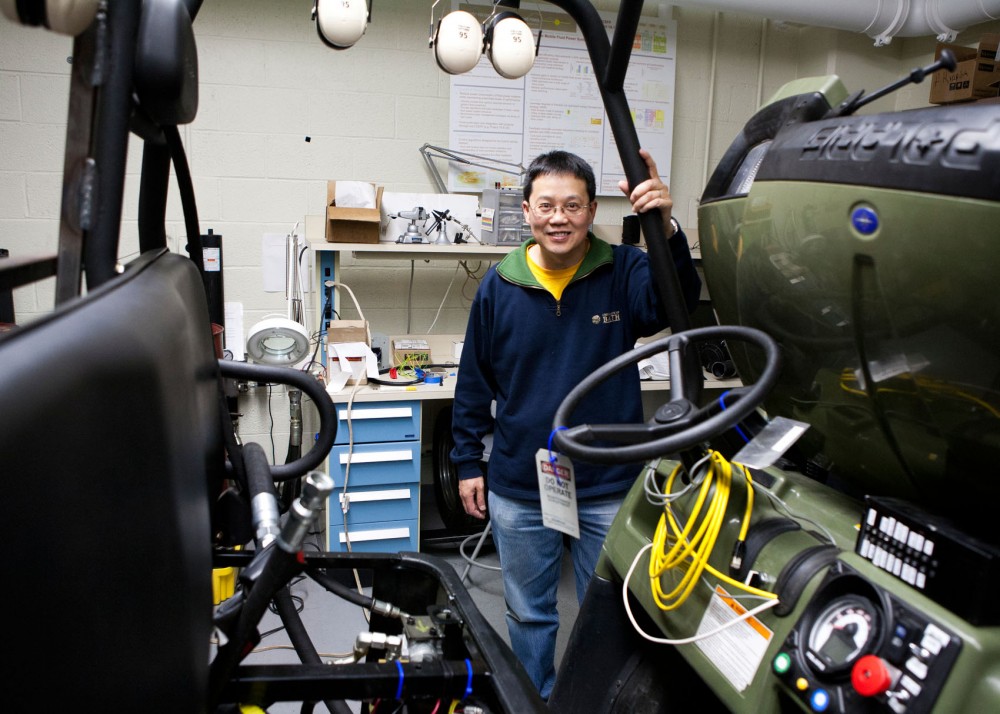Perry Li’s renewable energy storage system started as an idea for powering energy-efficient cars.
Six years later, his isothermal compressed air energy storage technology, which provides large-scale energy storage, has been licensed for commercialization.
The invention provides a way of storing energy without taking up a lot of space or losing much of the captured energy.
“Storage for wind energy is a relatively new thing — typically wind turbines and solar energy do not have a lot of storage, so that poses a lot of problems for the predictability of power outputs,” Li said. This unpredictability makes it difficult to integrate renewable energy into the grid for everyday use, he said.
ICAES uses wind energy to power an air compressor. The compressed air goes into a storage tank until the energy is needed. The process is then reversed, and the air is expanded, producing energy that powers an electric generator.
In March, the University of Minnesota’s Office for Technology Commercialization licensed ICAES nonexclusively to SustainX, a New Hampshire-based energy storage company that researches, builds and markets storage systems similar to Li’s. Gene Hunt, a SustainX spokesman, said the company licensed Li’s invention so that it can be on hold for future developments. The company does not currently have any specific plans for implementation, he said.
Li said other existing compressed air storage methods are less than 50 percent efficient, requiring an underground cavern for storing compressed air, which limits the locations where a storage system can be built. And because the air is not kept at a constant pressure, it cools down upon extraction, losing a lot of energy.
In 2006, Li and his colleagues began working on a hydraulic hybrid vehicle. They were in the process of developing an energy storage system for that purpose when they realized that their idea was better suited to grid-scale energy storage.
“Knowing about wind energy and renewable energy in general, we realized that this is a very well-matched technology for that kind of area,” Li said.
Li’s system stores compressed air in any vessel that can withstand a lot of pressure while keeping the air at a constant pressure.
“This type of technology can be very economical for storing large amounts of electricity when it’s not needed –– say, at night when the wind is blowing — and then feeding it back into the grid during the day when the demand is higher, and the wind may have died down,” Hunt said.
To gain the rights to Li’s system, SustainX had to submit a license application to the OTC. The application for a nonexclusive license includes what Jay Schrankler, OTC’s executive director, called a “mini business plan.”
“They have to do a market forecast — what they’re going to do with the technology, the milestones that they’re going to achieve,” he said.
Schrankler said he could not disclose SustainX’s plan but said that it will allow Li’s invention to be developed further and sold on a large scale.
According to Hunt, potential customers include utilities, renewable energy developers, independent power producers and wind farm developers.
The University will receive .4 percent of the net sales earned by SustainX, Hunt said. According to Schrankler, Li and his team will then receive a third of the royalties earned by teh University
Li said when his system is implemented, it will make energy storage methods much more efficient.
“I think we found exactly the right partner to work with on this,” Schrankler said.











